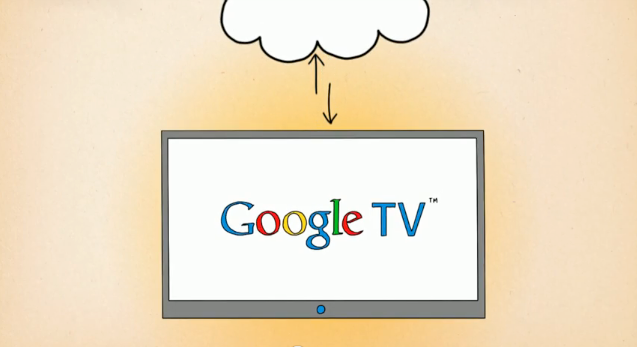Google TV Unveiled, With Much Potential For the Web-Enhanced Future of Television
We may earn revenue from the products available on this page and participate in affiliate programs. Learn more › At...

We may earn revenue from the products available on this page and participate in affiliate programs. Learn more ›
At their developer conference today, Google announced their long-awaited Google TV service, which promises to merge the web with TV more smoothly and seamlessly than ever before. With some interesting Android integration thrown in for good measure.
Did Google just singlehandedly revolutionize TV in one fell swoop? No. But here’s how it could happen, soon.
Google TV is not a specific device, but a software and hardware spec that can be baked into all manner of gadgets, from standalone set-top boxes to TVs themselves. It works with your existing cable or satellite box, so those hoping to replace that failing relic can keep wishing.
The primary interaction point is a universal search bar. You use it to search for shows and channels on TV, and also anything on the web. The web experience is completely stock (running on Google’s Chrome browser–it looks exactly like it does on your PC).
In a somewhat glitchy live demo, we saw how it works: type a channel name into the search bar, quickly tune to that channel clicking one of the results that pops up below. For someone like me who can never remember the obscure numbering system used by cable boxes, this is awesome. Search for a show or series (using an as-yet-unseed keyboard and mouse input device), and you come to a nice page that lists future episodes to be broadcast on cable right alongside links to download previous episodes from a variety of free and paid service providers like Hulu, Amazon on demand, and the TV network’s own site. Click a future episode and you can schedule DVR recordings. This looks great.
The idea is to replace the aging conceit of the on-screen guide–something that worked for 75-100 channels but certainly not for the hundreds now available on most cable and satellite plans–with a Google search bar.
What’s interesting (or, in some ways, disappointing) is that Google TV itself does not provide a means to repackage web content specifically for the biggest screen in the house. While many web-enabled TV platforms have attempted to widgetize info feeds and come up with new ways to provide supplemental web content while you’re watching a show, Google TV’s basic solution is to drop live TV into a picture-in-picture window, bringing a standard Chrome window to the front.
To go beyond this basic web/TV mashup (which is certainly nothing new–everyone remembers WebTV, right?), the responsibility is on developers to provide new interfaces optimized for a television to present content to the living room. Google presented one of its own in YouTube LeanBack, an interface like Apple’s Front Row for watching YouTube videos. Google will be releasing specs for developers to optimize their websites for Google TV (much like some websites can be optimized for game consoles today).
Where things get interesting is Google TV’s integration with the Android platform. Google TV itself runs on Android 2.1, which means thousands of apps can be piped into your TV directly. Google also demoed a super-nifty integrated remote app running on an Android phone: simply say the name of a show you want to watch into your phone, and it’s entered automatically into the quick search bar. Awesome. You can also send a YouTube video you’ve found on your phone to the TV, instantly.
What’s even cooler is that this remote API will be open–allowing developers to create applications to control Google TV on whatever platform they want–be it PCs or other smartphones (like the iPhone).
So how will you get Google TV? Announced today were partnerships with Sony, who is baking it into a future line of TVs and Blu-ray players; Logitech, who is creating a standalone set-top box (similar to D-Link’s Boxee box we saw at CES) so users don’t have to buy a new TV, along with a host of input devices; Intel, who is making the Atom chips to power it all; Dish Network, Google’s previously announced partner, will be baking it deeply into their receiver boxes and DVRs; and Best Buy, where we’ll be able to buy all this stuff. Surely there will be more players soon.
If you’re sensing a theme here, it’s this: Google has provided a broad, open specification with Android and Chrome at its heart that developers and hardware companies can use basically any way they want to bring web content to the TV. It mirrors exactly their strategy with Android, which was to provide a free and open source smartphone platform to anyone who wanted it. Android is just now starting to gain serious momentum, over a year and half after the first phone was released.
So while Google TV itself may not represent a mind-blowing future of television today (someone, PLEASE, kill my cable box), what developers and content creators do with the platform has some pretty awesome potential. The main question now? How long it will take.